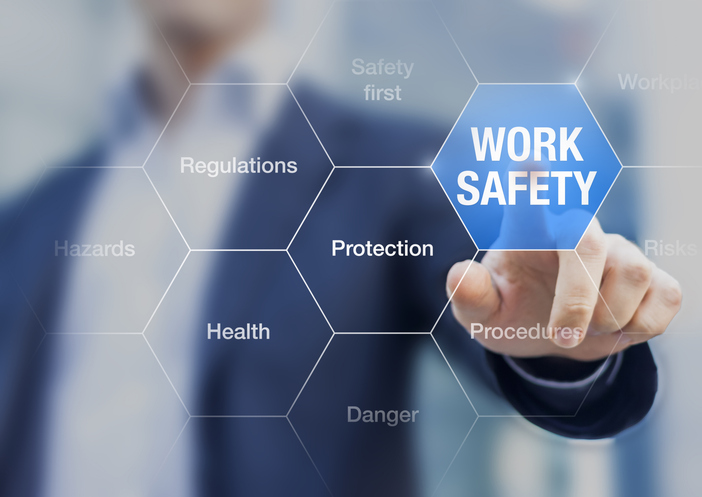The Function of Staff Member Training and Awareness in Enhancing Office Violence Avoidance Initiatives Across Different Industries
The integration of worker training and recognition into work environment violence avoidance efforts is increasingly identified as a fundamental element of organizational safety and security across diverse sectors. By executing targeted training programs, organizations can efficiently equip their labor force to identify and deal with prospective hazards before they intensify. Nevertheless, the performance of these campaigns typically rests on numerous crucial aspects that differ by field, raising vital concerns concerning the versatility of training techniques and their real-world influence. Comprehending these nuances may expose techniques that can substantially improve security procedures and worker confidence in high-risk atmospheres.
Importance of Educating Programs
In today's dynamic workplace, the value of training programs can not be overemphasized, particularly in the context of office physical violence avoidance. These programs act as a fundamental aspect in growing a safe and secure work environment society. By equipping employees with the understanding and skills essential to identify, reduce, and react to prospective risks, organizations can cultivate an environment that focuses on safety and security and wellness.
Efficient training programs do more than simply instruct; they encourage employees to recognize indication of violence, comprehend the procedures for reporting occurrences, and create methods to de-escalate possible conflicts. They infuse a sense of collective duty among team, urging proactive involvement in maintaining a secure workplace.
Investment in training not just improves employee recognition yet also demonstrates a company's dedication to safeguarding its workforce. This aggressive strategy can cause lowered events of workplace violence, lower absence, and boosted worker spirits. Inevitably, comprehensive training programs are essential to developing a resistant business society that values safety and promotes a healthy and balanced job setting, thus decreasing the risk of physical violence and its linked effects.
Key Elements of Effective Awareness
A comprehensive awareness program incorporates numerous key elements that are necessary for properly stopping workplace violence. First, clear communication of plans and procedures connected to workplace violence is critical. Staff members should be informed regarding the organization's position on physical violence and the particular procedures in position for reporting occurrences.
Second, training sessions need to incorporate realistic scenarios that employees might come across. This useful method aids staff members identify advising signs of possible violence and outfits them with the needed skills to de-escalate tense situations. Third, fostering an encouraging workplace culture is vital; workers must really feel empowered to talk up without concern of revenge.
In addition, ongoing education is vital to keep awareness relevant and fresh. Regular refresher training courses and updates on emerging dangers can improve staff members' alertness and preparedness. Integrating responses devices allows employees to share their insights and experiences, which can lead to constant enhancement of understanding initiatives. By integrating these elements, organizations can produce a robust framework for protecting against workplace violence, inevitably adding to a more secure and extra effective setting for all staff members.
Industry-Specific Training Methods
Effective workplace physical violence avoidance training need to be tailored to the distinct challenges and threats dealt with by particular industries. Healthcare settings need training that addresses the high chance of encounters with hostile individuals or visitors. Programs must concentrate on navigate here de-escalation strategies, recognizing warning signs of potential physical violence, and ensuring team recognize the relevance of reporting events.
In contrast, retail setups may face different dangers, such as robbery or client conflicts. Training in these settings should highlight situational understanding, response procedures during emergency situations, and the relevance of securing money and valuables.
Production and construction markets offer their very own dangers, typically related to interpersonal disputes or harmful working problems. Training in these markets must consist of approaches for problem resolution, promoting a culture of safety and security, and urging open communication among employees.
Furthermore, corporate workplaces might call for training centered on protecting against harassment and intimidation, fostering a respectful this content workplace culture, and carrying out clear coverage devices. Each sector must not only recognize its particular vulnerabilities yet additionally adjust training products to reverberate with the labor force properly, ensuring that employees feel equipped and empowered to manage possible violent situations.
Measuring Training Performance
Examining the impact of office physical violence prevention training is critical for making sure that workers are adequately prepared to handle potential hazards. Pre- and post-training surveys can gauge modifications in employee understanding, attitudes, and habits concerning workplace physical violence.
Furthermore, practical evaluations, such as role-playing scenarios or simulations, can offer understandings into just how well employees apply discovered abilities in real-life circumstances. Keeping track of occurrence reports before and after training can additionally serve as an indicator of performance, as a reduction in events might reflect enhanced staff member preparedness.
Moreover, feedback from individuals ought to be methodically collected to identify areas for renovation in training content and shipment. Carrying out follow-up evaluations at regular intervals aids endure recognition and strengthens training principles in time - california workplace violence prevention. By utilizing a thorough strategy to determining training performance, companies can make certain that their workplace violence avoidance initiatives foster a more secure atmosphere and boost overall employee wellness
Building a Society of Safety

Training plays a pivotal duty in this social shift. Normal, comprehensive training sessions enlighten staff members about recognizing caution indicators of work environment physical violence and the appropriate reactions. Furthermore, encouraging open interaction allows employees to voice worries without anxiety of retaliation, promoting cumulative duty for safety.
In addition, incorporating security right into day-to-day operations guarantees that it becomes a shared value instead than a mere conformity problem. This consists of regular security drills, updates on policies, and responses devices that entail employees in security conversations and enhancements.
Ultimately, a durable culture of safety and security not only mitigates the threats of work environment physical violence but likewise improves staff member morale and efficiency. By promoting a setting where safety is a fundamental concern, organizations can produce durable work environments that sustain both individual health and cumulative success.
Final Thought
To conclude, worker training and awareness are essential parts in the avoidance of work environment violence across various markets. Efficient training programs, tailored to specific industry demands, improve workers' capacity to acknowledge and respond to prospective risks. By implementing detailed awareness techniques and fostering a culture of safety and security, organizations can considerably minimize occurrences of office violence and improve general staff member morale. Commitment to continuous training and evaluation guarantees sustained performance and flexibility in dealing with arising obstacles within the office environment.

Routine, detailed training sessions educate workers regarding recognizing caution indications of work environment violence and the ideal reactions.In final thought, worker training and understanding are important components in the avoidance of work environment violence across numerous markets.